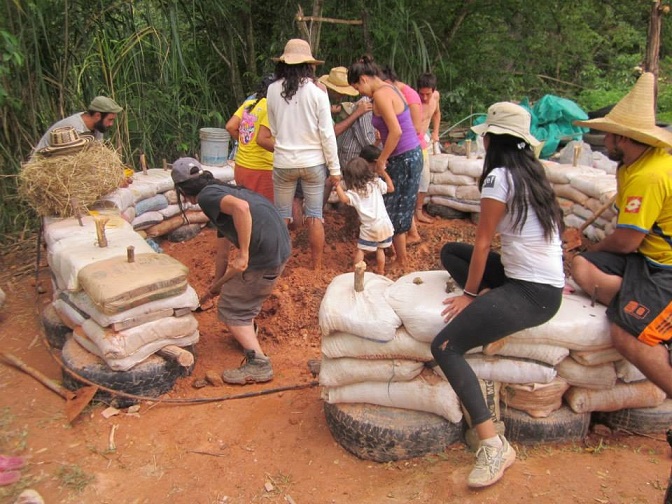In this final article written by university students from Colombia, Diana Meza writes about the values and practices of the local Permaculture movement. The social/solidarity economy in higher education project handbook will begin with a chapter on the values and beliefs systems of people working in the social economy, arguing that these underpin any work which has community and environmental concerns as part of its ‘DNA’
Article in Spanish by Diana Meza, student of social communication at Universidad Pontificia Bolivariana, Colombia
Translated into English by Charles Hanks, UK, collaborator in the social economy in higher education project
 Bucaramanga is a city where, paradoxically, over-construction is evident and yet there are more and more housing projects leaving fewer and fewer green spaces. Luckily for the inhabitants, however, there is a small group of people fighting to preserve the environment and for ecological education: Guan Permaculture Centre is an organisation which, without being officially part of the social economy, fully supports its aims.
Bucaramanga is a city where, paradoxically, over-construction is evident and yet there are more and more housing projects leaving fewer and fewer green spaces. Luckily for the inhabitants, however, there is a small group of people fighting to preserve the environment and for ecological education: Guan Permaculture Centre is an organisation which, without being officially part of the social economy, fully supports its aims.
Permaculture is a word few people know and a fewer still practise. It essentially consists of a sustainable system integrating housing and the natural landscape, saving materials extracted from the earth and, as a result, generating less waste.
The organisation stemmed from a concern about the constant harm humans inflict on the earth with toxins, chemicals, rubbish and other types of contamination that form part of our daily lives. One day, a group of friends decided, without ceremony, to live an eco-friendly life and to incorporate make that culture a habitual part of the people of Santander’s lives: one step at a time they formed the permaculture centre. The specific role that Guan plays in the region is to generate knowledge around bioconstruction so that people are aware of an economical, ecological and sustainable alternative living arrangement.

The people behind Guan have already been putting this into practice for two years, sharing their experience with others through workshops, run either by themselves or by international experts. The participants work together in a bioconstruction project and some of them end up joining the organisation as volunteers. It is important to note that there is no hierarchy at Guan: all the members take part collectively in decision-making and make up a network of sharing, be it materials or labour – they are in many ways more like a family than an organisation.
In a city where it seems titles and ownership are all-important and social inequality is evident, it is interesting to see such groups emerging, with ideas and projects that leave status and economic values to one side to make way for collective benefit which, though few of us acknowledge the fact, we all have a responsibility to achieve. It seems to me that this innovative bioconstruction project contributes to ecological development: the organisation is breaking with modern conventions and rediscovering a healthy lifestyle based on environmental conscience, that which our Guane ancestors themselves practised*; it is breaking with the consensus that in order to make a pizza or some biscuits you need a cooker or a sophisticated oven, reminding us that a clay oven performs the same function.
 Guan Permaculture Centre exists to provide ecological education, convey messages about the responsible care we must take of the planet, nurture environmental conscience, and through this generate social impact in the sector. It is a non-profit organisation which, with a great deal of effort and love, is kept going by selling artisanal goods made from recycled materials, and various foods such as ready-to-bake dough, pesto, sauces, organic bread, as well as seeds, fertiliser and plants. There is a small fee for workshops which is used to pay the workshop leaders and to cover the students’ meals during their stay at the Centre.
Guan Permaculture Centre exists to provide ecological education, convey messages about the responsible care we must take of the planet, nurture environmental conscience, and through this generate social impact in the sector. It is a non-profit organisation which, with a great deal of effort and love, is kept going by selling artisanal goods made from recycled materials, and various foods such as ready-to-bake dough, pesto, sauces, organic bread, as well as seeds, fertiliser and plants. There is a small fee for workshops which is used to pay the workshop leaders and to cover the students’ meals during their stay at the Centre.
*The Guanes were a South American people that lived mainly in the area of Santander and north of Boyacá, both modern departments of Colombia. They were farmers cultivating cotton, pineapple and other crops, and skilled artisans working in cotton textiles